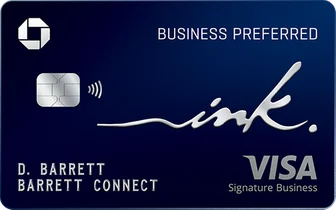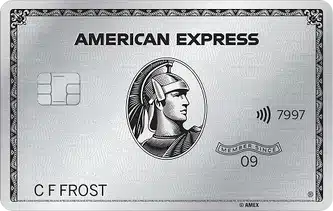This post contains references to products from one or more of our advertisers. We may receive compensation when you click on links to those products. For an explanation of our Advertising Disclosure, visit this page. Johnny Jet has partnered with CardRatings for our coverage of credit card products. Johnny Jet and CardRatings may receive a commission from card issuers. Opinions, reviews, analyses & recommendations are the author’s alone, and have not been reviewed, endorsed, or approved by any of these entities.
The information for the Hilton Honors American Express Aspire Card has been collected independently by Johnny Jet. The card details on this page have not been reviewed or provided by the card issuer.
I’ll be honest—premium cards do come with high annual fees, but they also offer numerous perks. In fact, some of these cards provide so many benefits that the annual fee is easily offset. For example, you might receive free checked bags for yourself (and up to 8 companions), a complimentary hotel night reward, dining credits, and more. In short, the best premium credit cards can help you maximize all your spending.
With one of these cards in your wallet, you’ll have the opportunity to earn and redeem rewards for various options like award travel, cashback, or even purchases at select retailers. Some even allow you to use your rewards to pay off previous purchases! Here are some of the best premium credit cards in 2024.

Best Premium Credits Cards 2024
Terms apply to American Express benefits and offers. Enrollment may be required for select American Express benefits and offers. Visit americanexpress.com to learn more.
- The Platinum Card® from American Express – Best Premium Card for Frequent Flyers
- Chase Sapphire Reserve® – Overall the Best Premium Credit Card
- Hilton Honors American Express Aspire Card – Best Hotel Rewards
- Delta SkyMiles® Reserve American Express Card – Best Premium Airline Card
- The Business Platinum Card® from American Express – Best Premium Business Card
- Capital One Venture X Rewards Credit Card – Best Lower Cost Premium Card
If you have a 740 credit score and love to travel, consider upgrading the rewards credit cards you use to earn points and miles. Not only can you use the benefits and perks that come with these travel cards, but you can also earn points or miles that will help you further your travels.
In case you don’t know your credit score, here are some of the best places to get a free credit score check without hurting your credit.
The Platinum Card from American Express – Best Premium Card in 2024 for Frequent Flyers
Frequent flyers can benefit the most from The Platinum Card® from American Express. Here’s why:
- Up to $200 airline fee credit (in the form of a statement credit, enrollment required)
- Global Entry or TSA PreCheck application fee credit
- Global Lounge Collection membership (Priority Pass (enrollment required), Centurion, Delta Sky Club, and others)
- Transfer points on a 1:1 basis to leading frequent flyer programs
Other benefits include enhanced Marriott Bonvoy and Hilton Honors loyalty status, plus these little-known Platinum Card benefits (enrollment required).
Cardholders earn 5x Membership Rewards® Points for flights booked directly with airlines or with American Express Travel, up to $500,000 on these purchases per calendar year, and earn 5x Membership Rewards® points on prepaid hotels booked with American Express Travel.
Cardholders can get up to $200 back in statement credits each year on prepaid Fine Hotels + Resorts® or The Hotel Collection bookings with American Express Travel when they pay with the Platinum Card®. The Hotel Collection requires a minimum two-night stay.
Also, select one qualifying airline and then receive up to $200 in statement credits per calendar year when incidental fees are charged by the airline to your Card.
Plus, American Express has expanded The Centurion® Network to include 40+ Centurion Lounge and Studio locations worldwide. Now there are even more places your Platinum Card® can get you complimentary entry and exclusive perks.
Platinum Card Benefits
There’s also a digital entertainment credit, making this card one of the best for streaming services. Cardholders can get up to $20 in statement credits each month when they pay for eligible purchases with the Platinum Card®. Enrollment required.
In addition to enjoying TSA PreCheck or Global Entry access, cardholders can also enjoy CLEAR perks. Breeze through security with CLEAR® Plus and get up to $189 back per year on your membership (subject to auto-renewal).
Another exciting benefit is the ability for cardholders to get up to $300 back each year in the form of statement credits on an Equinox+ subscription or any Equinox club membership when they pay with their Platinum Card. Enrollment required.
Plus, get up to a $155 Walmart+ credit, which covers the cost of a $12.95 monthly Walmart+ membership with a statement credit after you pay for Walmart+ each month with your Platinum Card. The cost includes $12.95 plus applicable local sales tax.
Get the full details and learn more in our in-depth The Platinum Card from American Express review.
The annual fee is $695 (See Rates & Fees) but can be offset with the perks, which are valued at over $1,400.
This is also why it is one of the best cards for international travel.
Platinum Card Welcome Bonus
New The Platinum Card® from American Express cardmembers can earn 80,000 Membership Rewards® points after spending $8,000 on purchases on their new Card in the first 6 months of Card Membership.
This is one of the best card offers.
Chase Sapphire Reserve – Overall the Best Premium Credit Card 2024
The Chase Sapphire Reserve® earns unlimited 3x Chase Ultimate Rewards on dining purchases. Plus, earn 5x total points on flights and 10x total points on hotels and car rentals when you purchase travel through Chase Travel℠ immediately after the first $300 is spent on travel purchases annually. Earn 3x points on other travel and dining & 1 point per $1 spent on all other purchases.
Points and Perks
If you know a thing about credit card rewards points, Ultimate Rewards are some of the most valuable you can earn.
Each point has a redemption value of 1 cent each with the Chase Sapphire Reserve. However, your points are worth 50% more when booking any award travel through the Chase travel portal. For example, 10,000 points are worth $150 in award travel but only $100 in cash rewards.
You can also transfer your points on a 1:1 basis to select airline and hotel loyalty programs, including World of Hyatt, United Airlines, Southwest Airlines, and British Airways. These four transfer partners are some of the best for booking domestic and international award travel. The Chase Sapphire Reserve is also one of the best credit cards for miles.
This premium credit card also has several valuable Sapphire Reserve travel perks. Some of the most valuable include:
- Priority Pass Select airport lounge membership
- Global Entry or TSA PreCheck application fee reimbursement
- Primary rental car collision damage and theft waiver protection
The annual fee is $550.
Sapphire Reserve Signup Bonus
New Chase Sapphire Reserve® cardholders can earn 60,000 bonus points after spending $4,000 on purchases in the first 3 months from account opening. That’s $900 toward travel when redeemed through Chase Travel℠.
Hilton Honors American Express Aspire Card – Best Hotel Rewards
With the Hilton Honors American Express Aspire Card, you can enjoy travel perks now and later.
For instance, how many hotel cards provide a free hotel night certificate at account opening? You get one free weekend night certificate—valid at any property that costs 50,000 points or less—at account opening and each card renewal. You get a second night each year after making $60,000 in annual card purchases.
Cardholders also get up to $250 in statement credits on their Card Account for eligible purchases made directly with participating Hilton Resorts.
Other Hilton benefits include:
- Up to $250 Airline Fee Credit for incidental charges that are charged by the airline to your Card annually
- Up to $100 annual Hilton credits for qualifying charges at participating Waldorf Astoria® Hotels & Resorts and Conrad® Hotels & Resorts (with a minimum 2-night stay)
- Complimentary Diamond status (100% bonus points, space-available upgrades, etc.)
- Earn up to 14x points per $1 spent on eligible Hilton purchases
- Terms apply; enrollment may be required
Cardholders also earn 7x points per $1 spent on select travel, including flights booked directly with airlines or AmexTravel.com and car rentals booked with select car rental companies. They also earn 7x points per $1 spent on dining at U.S. restaurants, including eligible takeout and delivery.
The Aspire Card also gives you a complimentary Priority Pass Select lounge membership. This is one of the few hotel cards also offering air travel benefits.
The annual fee is $450 (See Rates & Fees).
Hilton Honors Aspire Welcome Bonus
The current welcome bonus offer is the ability to earn 150,000 Hilton Honors bonus points by spending $4,000 in the first 3 months. This bonus is worth up to 30 free Hilton nights.
Delta SkyMiles Reserve American Express Card – Best Premium Airline Card 2024
Most major airlines have premium airline cards. The best co-brand card for you may be the airline you fly with the most. But if you’re flexible, the Delta SkyMiles® Reserve American Express Card is one of the best premium cards you can use for airline perks.
These everyday perks include one free checked bag on Delta flights for you and up to 8 travel companions for a potential $540 roundtrip savings, complimentary Delta Sky Club access when traveling on a Delta flight, Main Cabin 1 priority boarding, and 20% in-flight savings.
Annually after each card renewal, receive a Companion Certificate on First Class, Delta Comfort+®, or Main Cabin domestic, Caribbean, or Central American roundtrip flights to select destinations. However, payment of government-imposed taxes and fees of no more than $80 for roundtrip domestic flights and no more than $250 for roundtrip international flights (both for itineraries with up to four flight segments) is required. Baggage charges and other restrictions apply. See terms and conditions for details.
Regarding rewards, you earn unlimited 3x SkyMiles per $1 spent on purchases made directly with Delta and 1x mile per $1 for everything else.
Additional Perks
Complimentary access to the Delta Sky Club® is also available when traveling on a Delta-marketed or operated flight on the same day. Get four Delta Sky Club One-Time Guest Passes annually. After that, you can bring up to two guests at a per-visit rate of $50 per person per location. Effective 2/1/25, Reserve Card Members will receive 15 Visits per year to the Delta Sky Club; to earn an unlimited number of Visits each year starting on 2/1/25, the total eligible purchases on the Card must equal $75,000 or more between 1/1/24 and 12/31/24, and each calendar year thereafter. Plus, enjoy complimentary access to The Centurion® Lounge when you book your Delta flight with your Reserve Card.
Earn $1 Medallion® Qualification Dollar for each $10 of purchases made on your Card in a calendar year and get a boost toward getting elevated status for the next Medallion Year. Get $2,500 Medallion® Qualification Dollars each Medallion Qualification Year.
Get upgrade priority over other Medallion Members within the same Medallion level and fare class. Not a Medallion Member? Reserve cardholders with an eligible ticket will be added to the Complimentary Upgrade list, after Delta SkyMiles Medallion Members and Reserve Card Members. Ticket must be purchased on or after February 1, 2024, to be eligible to receive a complimentary upgrade.
Eligible Card Members get 15% off when using miles to book Award Travel on Delta flights through delta.com and the Fly Delta app. Discount not applicable to partner-operated flights or to taxes and fees.
Cardholders can also earn up to $200 back (in the form of a statement credit) annually on eligible prepaid Delta Stays bookings on delta.com. Additionally, get up to $50 off the cost of your flight for every 5,000 miles you redeem with Pay with Miles when you book on delta.com.
Delta Reserve Welcome Bonus
New Delta SkyMiles® Reserve American Express Card cardholders can earn 60,000 bonus miles after spending $5,000 in purchases on their new Card in their first 6 months of Card Membership.
The annual fee is $650, but there are no foreign transaction fees (See Rates & Fees).
The Business Platinum Card from American Express – Business Travelers
The Business Platinum Card® from American Express lets you earn 5x Membership Rewards® points on flights and prepaid hotels booked through AmexTravel.com.
Earn 1x points for each dollar spent on eligible purchases.
Cardholders earn 1.5x points (that’s an extra half point per dollar) on eligible purchases at US construction material, hardware suppliers, electronic goods retailers, and software & cloud system providers, and shipping providers, as well as on purchases of $5,000 or more everywhere else, on up to $2 million of these purchases per calendar year.
Your most valuable point redemption options are for award flights. You get a 35% point redemption bonus when booking qualifying flights on AmexTravel.com, up to 500,000 points. Plus, you can transfer your points to the 1:1 Membership Rewards transfer partners, including Delta, British Airways, and Emirates.
Additional Benefits
Other Business Platinum Card travel perks include Global Lounge Collection membership and Global Entry or TSA PreCheck application fee credit.
Additionally, unlock over $1,000 in annual statement credits on a curation of business purchases, including select purchases made with Dell Technologies, Indeed, Adobe, and U.S. wireless service providers.
Plus, get up to $200 in statement credits per calendar year for incidental fees charged by your one selected, qualifying airline to your Card.
Cardholders can get up to $189 in statement credits per calendar year on your CLEAR® Plus Membership (subject to auto-renewal) when they use their Business Platinum Card®.
With complimentary access to more than 1,400 airport lounges across 140 countries and counting, with The American Express Global Lounge Collection®. You have more airport lounge options than any other credit card issuer on the market as of 03/2023. Enrollment is required for some lounges.
Business Platinum Card Welcome Bonus Offer
New The Business Platinum Card® from American Express cardholders have the opportunity to earn 120,000 Membership Rewards® points after you spend $15,000 on eligible purchases with your Card within the first 3 months of Card Membership.
The annual fee is $695 (See Rates & Fees).
However, if you prefer more flexible purchase rewards but a small annual fee, you might also consider The American Express® Business Gold Card. You can earn up to 4x points on your largest purchase categories. Check out our comparison of the Amex Business Gold vs Amex Business Platinum for more information.
Capital One Venture X Rewards Credit Card
If you’re looking for a little more oomph in your travels, consider the Capital One Venture X Rewards Credit Card. This addition to the Capital One lineup includes the ability to earn unlimited:
- 10x miles on hotels and rental cars booked through Capital One Travel
- 5x miles on flights booked through Capital One Travel
- 2x miles on all other purchases
Cardholders can also enjoy unlimited access to all-inclusive amenities at the Capital One Lounge and at Priority Pass lounges worldwide. Plus, they’ll receive up to a $100 credit for Global Entry or TSA PreCheck®.
Additional benefits include $300 back annually for bookings through Capital One Travel, where you’ll get access to thousands of options. Plus, get 10,000 bonus miles (equal to $100 towards travel) every year, starting on your first anniversary.
Capital One Venture X Rewards Bonus
Earn 75,000 bonus miles when you spend $4,000 on purchases in the first 3 months from account opening, equal to $750 in travel, with the Capital One Venture X Rewards Credit Card.
This offer is perfect for a relaxing vacation either domestically or abroad. The annual fee is $395, but there are no foreign transaction fees.
Summary of Best Premium Credit Cards 2024
In conclusion, the extra benefits you get from premium credit cards are a massive upgrade over standard travel credit cards. But those cards also have smaller annual fees. If you can maximize the various travel credits and loyalty benefits, the best premium credit cards in 2024 are worth having.
Best Premium Credits Cards 2024
- The Platinum Card® from American Express
- Chase Sapphire Reserve®
- Delta SkyMiles® Reserve American Express Card
- Hilton Honors American Express Aspire Card
- The Business Platinum Card® from American Express
- Capital One Venture X Rewards Credit Card
Related Articles:
- Best Credit Cards for Travel Rewards
- The Best Metal Credit Cards
- Amex Gold vs Amex Platinum Review (Best Amex Card?)
For rates and fees of The Platinum Card® from American Express, please click here.
And for rates and fees of The Business Platinum Card® from American Express, please click here.
And for rates and fees of the Delta SkyMiles® Reserve American Express Card, please click here.
For rates and fees of the Hilton Honors American Express Aspire Card, please click here.
Johnny Jet has partnered with CardRatings for our coverage of credit card products. Johnny Jet and CardRatings may receive a commission from card issuers.








The purchase protection, auto insurance and other benefits of credit cards are great. The points stuff is mostly a waste of time. Since each point is 1-2 cents at best, with “many thousands of points 5x 10x 1 million XXXXX” at the end of the day you’re talking about a few hundred dollars. NBD. Time better spent working, with family, or watching TV than “MAXXXXIMIZING POIIINTS!”.